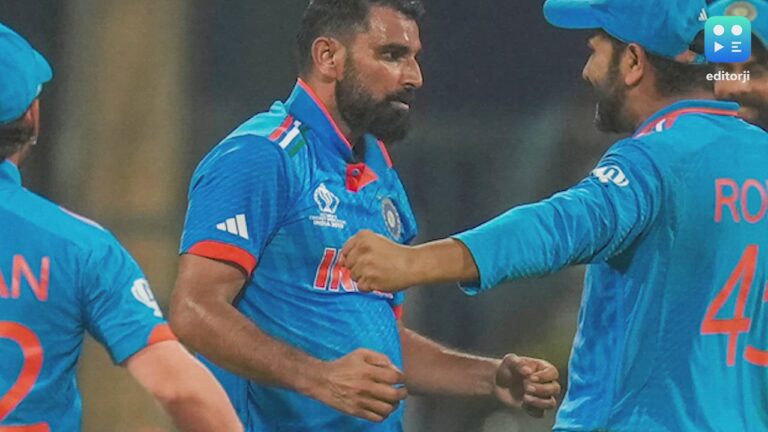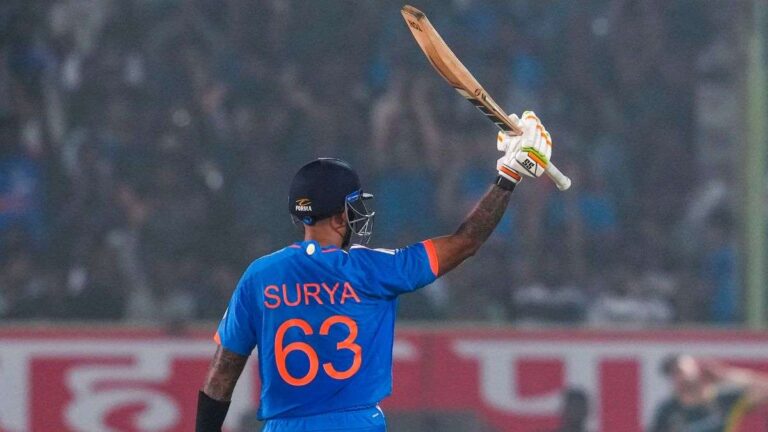Australia Claims 6th ODI World Cup – Australia emerged victorious against India by six wickets in the World Cup 2023 final at Ahmedabad’s Narendra Modi Stadium on Sunday. Securing their sixth ODI World Cup title, Australia outperformed the red-hot favorites, India, who had a stellar record with 10 consecutive wins leading up to the final. Travis Head’s outstanding century, a key turning point in Australia’s dominance, marked an end to India’s quest for their third world title in one-day internationals. Despite India’s strong group stage performance and a high-scoring semifinal victory over New Zealand at Mumbai’s Wankhede Stadium, they fell short in the crucial final showdown.
Australia’s Storied World Cup Triumphs
Australia’s journey in the Cricket World Cup has been marked by historic triumphs and resounding comebacks. Securing their inaugural title in 1987, they went on an impressive streak with three consecutive victories in 1999, 2003, and 2007. Despite a setback in the 2011 quarterfinal against eventual champions India, Australia rebounded emphatically to claim the World Cup on their home turf in 2015.
The 2023 World Cup brought both challenges and glory for Australia. Initially stumbling with losses to India and South Africa, they showcased resilience by winning nine consecutive matches, culminating in one of their most memorable World Cup campaigns.
A significant chapter in Australia’s World Cup legacy unfolded in 2003 when they defeated India in the final. Twenty years later, Indian fans yearned for revenge, but their hopes were dashed. Despite India’s batting prowess, they faltered as Australia’s captain, Pat Cummins, opted to bowl after winning the toss. Rohit Sharma contributed a swift 47, but Shubman Gill, Shreyas Iyer, and Suryakumar Yadav failed to make an impact. KL Rahul managed just one four in his 107-ball 66, and Virat Kohli, scoring 54, strangely decelerated during a partnership with Rahul.
In contrast, Australia’s batters displayed unyielding aggression.
The highlight of their clinical chase was Travis Head’s exceptional century, ably supported by Marnus Labuschagne, who secured a solid half-century. Although Australia briefly slipped to 47 for 3, the partnership between Head and Labuschagne ensured a seamless journey to victory, securing their sixth ODI World Cup title.
Australia initiated their chase with a bang, extracting 15 runs from the initial over-delivered by Jasprit Bumrah. In an unusual move, Mohammed Shami bowled the second over instead of the regular Mohammed Siraj. Despite Shami dismissing David Warner, Australia swiftly reached 28 for 1 by the conclusion of the second over.
Jasprit Bumrah’s brilliance shone through as he claimed two wickets in successive overs, dismissing Mitchell Marsh and Steve Smith. This raised hopes for India, especially as Smith, feeling the impact on his pads, opted not to review the LBW decision. Replays indicated the impact was outside off-stump, leaving Smith to regret his decision not to use the DRS.
Marnus Labuschagne played the ideal supporting role to the aggressive Travis Head. Head, who had showcased brilliance throughout the 2023 World Cup, missed the initial matches due to injury but marked his return with a century in the first match of the tournament. In the semifinal against South Africa, Head’s rapid half-century played a crucial role in Australia’s successful chase, solidifying his reputation as a key player for the team.
Australia Claims 6th ODI World Cup
On Sunday, as Marnus Labuschagne adopted a patient approach, Travis Head continued his aggressive onslaught, propelling Australia towards the brink of victory. Head’s century marked him as the 7th batter to achieve this feat in a World Cup final and the third opener to secure both a fifty and a hundred in the semifinal and final of a men’s ODI World Cup.
India’s on-field demeanor on Sunday was lackluster. The fielding standards fell far short of the excellence they had displayed throughout the World Cup. Although Jasprit Bumrah and Mohammed Shami secured early wickets, they conceded too many runs with the new ball. Ravindra Jadeja and Kuldeep Yadav encountered less turn than anticipated, and the late introduction of Mohammed Siraj proved ineffective.
Pat Cummins’s decision to bowl first after winning the toss raised eyebrows, reminiscent of Sourav Ganguly’s costly mistake in the 2003 World Cup final. Australia, having almost faltered in their semifinal against South Africa, faced skepticism about their ability to chase successfully.
Concerns grew for Cummins as Rohit Sharma launched an aggressive assault on Mitchell Starc and Josh Hazlewood, the bowlers who had dismantled the South African top order in Kolkata.
The noise reached a crescendo, creating an impression that Australia might crumble under the pressure and Rohit Sharma’s relentless batting.
The expectation was for Shubman Gill to anchor the innings, playing a vital role as India’s captain, Rohit Sharma, stirred up a storm. However, Gill’s poor shot resulted in a ballooned catch to Adam Zampa at mid-on. Despite the setback at 30 for 1 in the 5th over, the Ahmedabad crowd regained its voice with Virat Kohli joining Rohit Sharma at the crease.
Indian fans were treated to an exciting partnership as Virat Kohli matched Rohit Sharma shot-for-shot, briefly putting Australia on the defensive. Rohit Sharma’s breathtaking display and impressive strike rate had captured the cricket world’s envy. In the final, Kohli, typically the anchor after Rohit’s explosive start, unleashed an aggressive onslaught. For a brief period, India’s formidable batting duo made Australia’s highly skilled pace attack appear ordinary.
The early highlight was the trio of boundaries Kohli carved from a Mitchell Starc over, causing the Australians to feel the pressure. However, momentum shifted when Rohit Sharma, after hitting Glenn Maxwell for a six and a four, mistimed a shot and was sensationally caught by Travis Head.
Shreyas Iyer got off the mark with a boundary but fell to a back-of-a-length delivery from Pat Cummins.
What followed was an unusual 4th-wicket partnership with KL Rahul, where the scoring rate dropped significantly, producing only 67 runs without a single boundary in 19 overs.
Until the 10th over, India had hit 9 boundaries and 3 sixes, but from then until the innings’ end, they managed only four more fours. The slow pitch didn’t justify such a timid approach, reminiscent of a similar display against England in the T20 World Cup semifinal in 2022.
Questions arose about Rohit Sharma’s rash shot choice, and scrutiny extended to Shubman Gill, Shreyas Iyer, and Suryakumar Yadav. Suryakumar, in the XI due to Hardik Pandya’s injury, failed to make an impact, while Yadav’s slow 18 off 28 balls contributed to India’s below-par score of 240.
Despite the disappointment in the final, India’s journey to the title clash was commendable, winning 10 successive matches. Virat Kohli topped the run charts with 765 runs, followed by Rohit Sharma with 597 runs. Mohammed Shami, the leading wicket-taker, and Jasprit Bumrah, with 20 wickets, showcased their bowling prowess in the 2023 World Cup.
















